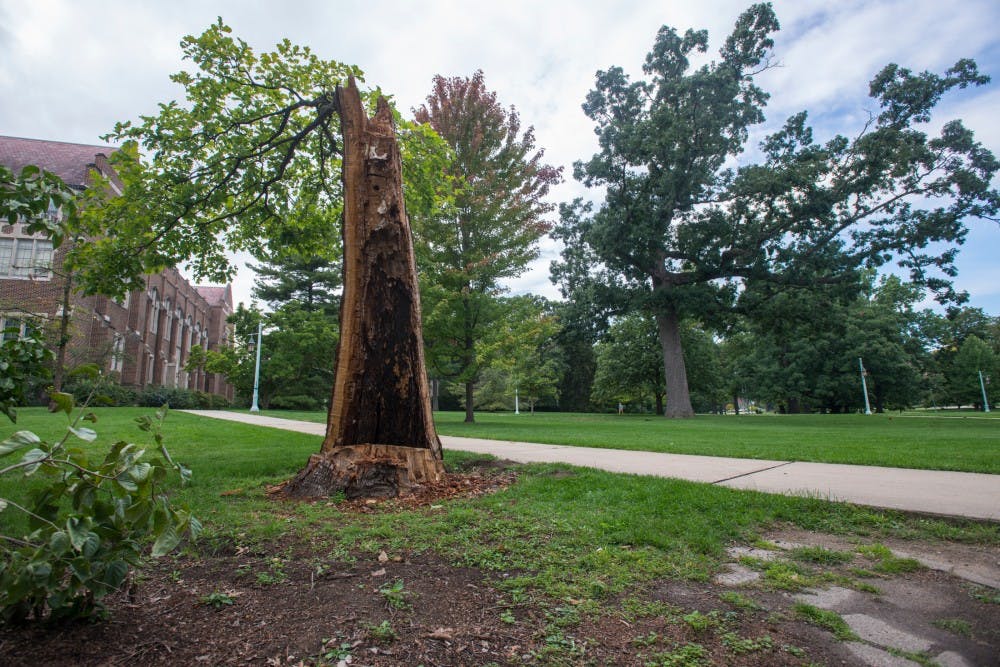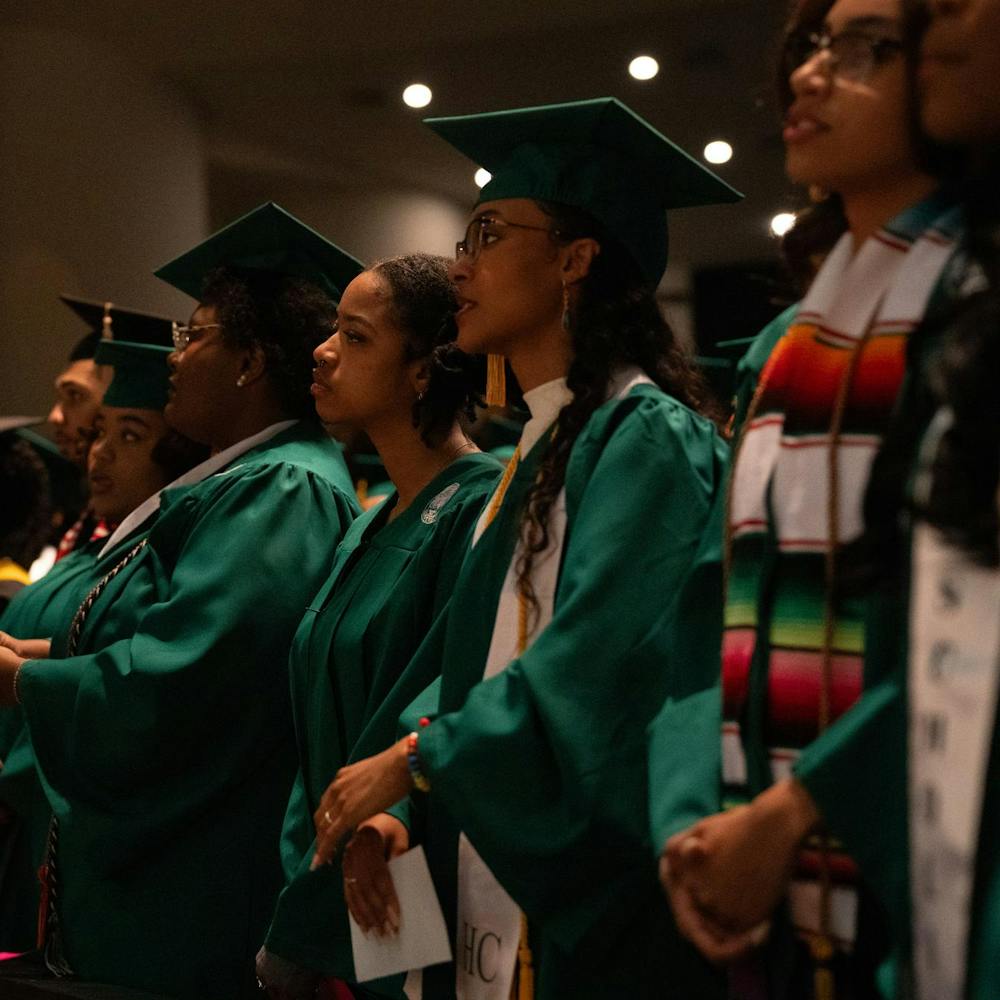When one of the oldest trees on MSU’s campus was blown down by a windstorm last July, it was devastating for Department of Plant Biology professor Frank Telewski.
The tree had split, and only a small section remained.
But, when the large white oak tree went down and Telewski started counting the rings of the tree to estimate its age, he discovered something remarkable.
“So this tree ... is actually still with us,” Telewski said. “It hasn’t completely died, and that’s why we haven’t taken it down. I can say to you without any doubt in my mind that this tree right here is, at a minimum, 350 years old and it likely germinated sometime in the early part of the 1600s.”
The large white oak, located between Linton Hall and the MSU Museum, was taken down by 65 mph winds in July.
The day of the storm, Telewski said he saw leaves blowing off of trees and window screens blowing off the sides of buildings from the wind, he said.
“We had several big trees down,” Telewski said. “We lost about — I think it was about 20 or so trees on campus that I had to report damage from the wind storm.”
Telewski immediately called MSU campus arborist Paul Swartz to let him know what happened and then began to survey the campus for more trees impacted by the storm, Telewski said in a written account of the event.
“Well, you know, I was pretty amazed that the wind had taken such a large tree,” Swartz said. “Luckily, it didn’t cause any harm coming down, but yeah, it was pretty sad to see one of the large specimens on North Campus go like that. It was probably one of the largest ones that we lost in that storm.”
Upon finding the white oak, Telewski noticed a metal cap on the tree. Soon after MSU was established, the tops of many trees were cut off to try to force the trees to grow outward instead of upward for shade. Later, metal caps were placed over the trees’ wounds to prevent decay, Telewski said.
Finding the metal cap on the fallen white oak that made everything click for Telewski.
“When I looked down, I saw that metal cap on there and it was like, ‘Oh my gosh, it’s one of the old trees that predates the campus,’” he said.
In an attempt to pinpoint the white oak’s age, Swartz and his crew found a partially solid point of the tree and cut a cross-section to be dried and analyzed, Telewski’s written account said.
“When I started counting those growth rings and I got beyond 250, and I still had a long way to the bark, I had the excitement that I felt," Telewski said. "We get very excited. We have 400 year old trees amongst us right on our very campus. And who knows if they’re even older?”
The impacts of such an old tree are huge.

If the tree germinated in the early 1600s, it’s been around to see the Native American encampments on this land, the clearing of the forest and the establishment of MSU, the fire that burned down Saints Rest right next to it, the construction of the sidewalk over its roots, droughts and much more, Telewski said.
“It’s seen probably every single student who’s been on the MSU campus, because I can’t imagine if you were a student at MSU that you didn’t walk by here,” he said. “Every Spartan on this campus has probably passed this tree. Maybe some in the distance, but within visible range of this tree. It’s been here that long ... I mean, think of all of the things that have happened in 300, 400 years. This tree survived it. And it’s still surviving.”
Even though only a fraction of the tree remains, what’s left of the tree survives. As long as the tree continues to sustain its current branch, it could go on for decades, Telewski said.
“It was kind of amazing,” Swartz said. “Even after that destructive storm, a small part of it is still living.”
Telewski hopes the white oak will produce acorns so the tree’s legacy will live on. Acorns are collected from the trees on MSU’s campus on a fairly regular basis, he said.
“We take them out to Beaumont Nursery,” Telewski said. “These are the original trees, these are the original genetics of the forest here over 150 years ago. Why not try to keep those trees growing and plant them back on campus?”
As for the rest of the tree, the wood was hauled by Swartz’s crew to their storage yard where it currently sits, Swartz said.
“We plan to repurpose it in some fashion,” he said. “It is a significant tree, so the wood will be used in some project to preserve it in some form. We’re going to try to preserve it as much as possible.”
Much of the wood from trees that fall on MSU’s campus goes through the program MSU Shadows, where the wood from fallen trees is transformed into new items for purchase.
Products include tables, cutting boards and frames.
Both Telewski and Swartz agree MSU’s trees need to be preserved and maintained because of their significance on campus and what they’ve been through.
“Something that old, it’s not something you find every day,” Swartz said. “We have some old trees on campus, but it was really a surprise to find out it was that old. I think something that old really requires some special attention and special consideration.”








